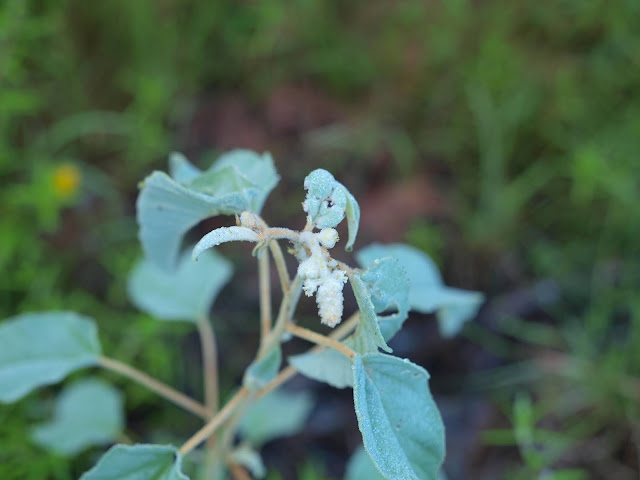Woolly Croton also known as Hogwort, Goatweed, Doveweed
Grasshoppers like to eat the plants, too
Goatweed or Croton has been a problem for many farmers because it harbors 'pests', like grasshoppers and root that also like to eat cotton, and because it causes illness in goats and cows that consume it with their feed. However, in non-agricultural forest areas and meadows it is an important part of the life
The croton grows in this silver-green fashion in moist areas of meadow and forest edges. It almost looks like a mint, which I have sometimes mistaken it for at a distance.
butterflies such as these phosphorus yellow winged and the Anaea andria or Goatweed Leafwing butterfly are common in our area, and they use the goatweed as caterpillar food.
As the season wears on the small upright plants will grow larger, and grow the small fuzzy heads. Here is a noticeable croton plant among the meadow hill near Shepard Lane Garden, and some of the other plants that are growing near to it. The yellow blooming plant is a legume that attracts bees and butterflies as well, and is an important nectar source.
And because, the lespedeza sericea glowing in the 'golden hour' of late Summer.
We're into Fall now very soon, and it will be time to start getting pictures of the Fall Tennessee wildflowers where they are growing.







Comments
Post a Comment